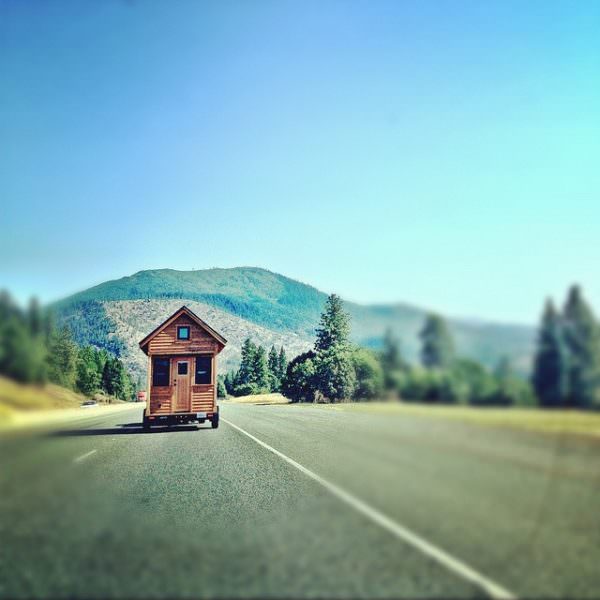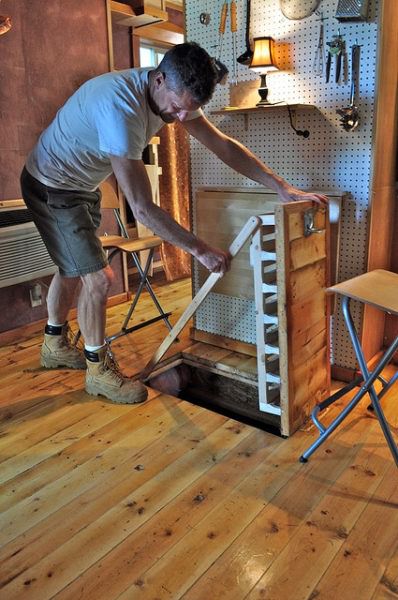You aren’t alone if you are dreaming about a tiny home. One part of the attraction is living a more minimalist lifestyle that has less impact on the environment. But an even bigger allure for some is the affordability factor.
At the end of 2015, the average sales price on a new home in the U.S. was nearly $375K. With the census showing the average American family income declining for the past three years, it’s no wonder tiny homes are becoming more appealing. As Americans continue to look for ways to shrink their environmental footprint and fill up their piggy banks, we thought we would put together a quick 101 on how to build a tiny home on a tiny budget.
Tiny homes offer big opportunities
Don’t Skimp on the Important Stuff
To be clear, this is not meant as a guide for how to cut corners. Any seasoned tiny home builder will tell you that it’s critical not to go cheap on certain aspects, because compromising the safety and structural integrity of your home will not be worth it in the long term. For a safe, happy home for you and your family, here are a few places not to be tight-fisted.

“We strongly recommend starting with a new trailer that’s designed for a tiny house. Although a used trailer will be cheaper upfront, a new trailer often ends up being the better bargain in the end both economically and psychologically.”
Window Panes: The Department of Energy says that windows can account for ten to 25 percent of one’s heating bill by allowing heat to escape. That’s why aspiring tiny home builders shouldn’t pinch pennies on second-hand single window panes, as this will end up costing you more on cooling and heating bills. New energy efficient storm windows or double pane windows with high performance glass will prove to be a better return on investment in the long run. Look for the ENERGY STAR® label when shopping for windows.
Framing: Making sure the foundation and framework of your tiny home is structurally sound is of the utmost important. As much as it may pain you to buy new materials for that phase of construction, just bite the bullet on this one. You can use that beautiful piece of salvaged lumber you have for other parts of your tiny home that are more aesthetic and won’t have you worrying whether the whole thing will come crashing down.
Do It Yourself
Labor is hands down the biggest expense. So the most obvious way to save money on a tiny home is by building it yourself, rather than paying a builder to do it for you. The DIY approach means you’ve got to get comfortable asking for help. Family and close friends are the best place to start.
Trade for Services

PUT YOUR RESOURCEFUL “NETWORKING” CAP ON AND THINK ABOUT FOLKS IN YOUR COMMUNITY, GROUP OF FRIENDS, FAMILY OR CO-WORKERS WITH WHOM YOU MIGHT BE ABLE TO TRADE SERVICES WHEN CONSTRUCTING YOUR TINY HOME. IMAGE: TAMMY STROBEL (FLICKR)
If you feel weird just asking for help without offering anything in return, offer to barter with people for services on your tiny home. Plus, let’s face it, we aren’t all cut out to be carpenters, electricians or plumbers. Put your resourceful “networking” cap on and think about folks in your community, group of friends, family or co-workers with whom you might be able to trade services.
Perhaps you have some fancy web design skills and can do a few hours of web design for your pal in exchange for a few hours of manual labor on your tiny home. You could also offer your skills online at Task Rabbit to earn some extra cash, or search for a decently priced handyman there to do any of the odd jobs on your tiny home that you dont feel comfortable doing yourself.
Get the right building toos.
Where to Look for Scrap Materials
The second biggest cost will come from the materials you choose. As best you can, try to find salvaged or scrap materials. You can especially save a lot by finding second-hand finished components like cabinets, flooring materials or appliances.
Find your local Habitat for Humanity Restore, a nonprofit home improvement store and donation center that sells new and gently used furniture, appliances and all kinds of building materials at an affordable price. Buy reused building materials at a fraction of the cost on Planet Reuse, an online marketplace for reclaimed materials.
The “free” section on Craigslist is another choice place to hunt for scrap building materials. But you have to be willing to put in the time and effort to search and scope out the items being offered. Oftentimes, people are moving and just want someone to come take stuff off their hands so they don’t have to pay a fee to have the city pick it up – so it’s a win-win for everyone. Freecycle is a grassroots nonprofit movement of people who have free stuff to give away or are requesting free items. Membership is free, and once you are signed up you can search for materials in your community.
De-Clutter Your Current Abode
In order to fit into your future tiny home, you are likely going to have to get rid of a LOT of stuff in your current residence. Think of this as an opportunity rather than a burden. You can earn extra money to invest in your tiny home building fund by selling off all the crap you barely use anyway.
Be sure to check out Earth911’s guide on how to make money off of recycling all kinds of items around the house such as e-waste, DVDs and books. If you are a huge vintage clothes and accessories collector, try selling your wares online at Thred Up, or take them to your local consignment shops like Buffalo Exchange or Plato’s Closet. For larger ticket items like furniture or appliances, consider selling them on Amazon Marketplace, eBay, Craigslist or at a local auction. Or if you just have so much stuff that you don’t want to bother with all of the above, you can always host an estate sale and try to get rid of it all at once.
Get Creative with Fundraising
Tiny home owners are typically folks that don’t fit the mold. Put this creative side to use in raising money for your tiny home. Ask your friends’ band to play music for a few hours, charge an entrance fee and host a tiny home fundraising concert and party! Friends and family are more likely to support your project with their hard earned cash-money if they feel like they are getting a fun experience out of it. Find companies to sponsor your tiny home building materials like these folks. Or start an Indiegogo fundraising campaign like this totally rad 12 year old did for her successful La Petite Maison project.
If you aren’t sure whether you are quite ready to make the leap into full-time tiny home residency, try a tiny home on for size while you are on vacation. Or get a sense of a typical budget for a tiny home from Tiny Revolution, who offers readers an itemized list of materials and costs.
